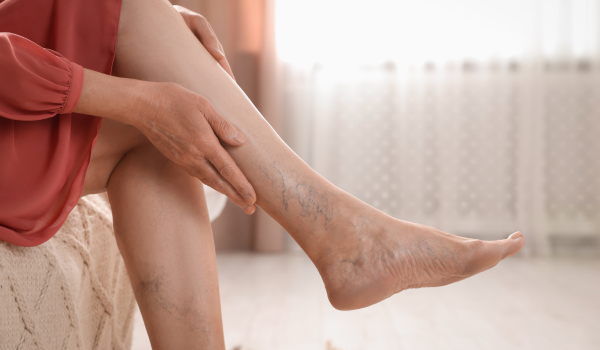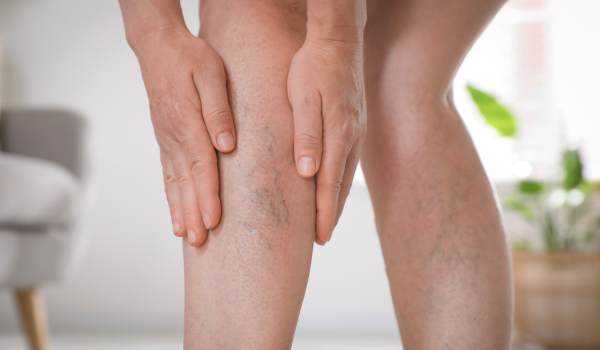.png)
Why Diagnosis Matters
Venous stasis is a circulatory condition marked by reduced or stagnant blood flow in the veins, most commonly in the legs. While early symptoms like swelling or leg heaviness may appear mild, the condition can progress into chronic venous insufficiency, skin damage, or even venous ulcers if not diagnosed and managed properly.
Timely and accurate diagnosis allows clinicians to identify the underlying cause, assess the severity, and initiate appropriate treatment to prevent long-term complications. Understanding the tools and evaluations involved is crucial for both healthcare providers and patients.
Initial Physical Examination
The first step in diagnosing venous stasis is a thorough physical exam. A healthcare provider evaluates visible symptoms, assesses patient history, and performs specific tests to evaluate vein function.
The exam includes:
-
Visual inspection of both legs
-
Assessment of swelling, skin color, and texture
-
Palpation for warmth, tenderness, or varicose veins
-
Checking for signs of ulcers, skin thickening, or eczema
-
Asking about symptom duration, patterns, and aggravating factors
In many cases, venous stasis can be suspected based on clinical signs alone, especially when supported by a known history of immobility, obesity, varicose veins, or chronic heart disease.
Patient History and Symptom Review
A detailed medical history is essential to identify risk factors and underlying contributors. During this stage, the doctor may ask about:
-
Onset and progression of symptoms
-
Previous episodes of leg swelling or DVT
-
Occupational habits (e.g., prolonged standing or sitting)
-
Pregnancy or hormonal therapy
-
Family history of vein disorders
-
Presence of chronic illnesses like diabetes or heart failure
Evaluating these factors helps narrow down the cause and determine the most appropriate diagnostic approach.
Assessment of Skin and Tissue
Skin examination plays a vital role in evaluating the severity of venous stasis. Signs that suggest advanced disease include:
-
Hyperpigmentation (brownish discoloration)
-
Lipodermatosclerosis (hardening of the skin and tissue)
-
Atrophie blanche (white, scar-like patches)
-
Stasis dermatitis (red, itchy, inflamed skin)
-
Presence of open sores or venous ulcers
These visual and tactile clues indicate chronic damage due to prolonged venous hypertension and guide further testing.
Leg Circumference Measurement
To assess swelling, clinicians may measure leg circumference at fixed anatomical landmarks, such as:
-
10 cm below the tibial tuberosity (below the knee)
-
At the ankle or calf midpoints
Asymmetry or rapid increases in measurement may suggest significant fluid retention or deep vein obstruction and prompt imaging evaluation.
Manual Vein Testing
Basic bedside tests can help assess venous valve function:
-
Trendelenburg Test: The leg is elevated and a tourniquet applied before the patient stands. The provider observes how quickly veins refill. Rapid refill suggests valvular incompetence.
-
Perthes Test: While wearing a tourniquet, the patient walks. If veins collapse, deep veins are functioning well. If they dilate or become painful, obstruction is suspected.
These are simple, non-invasive tests used in clinics, though less common today due to availability of ultrasound.
Duplex Ultrasound
Duplex ultrasound is the gold standard for evaluating venous stasis. It combines traditional ultrasound (to visualize structures) with Doppler ultrasound (to assess blood flow). It can:
-
Identify reflux in superficial or deep veins
-
Detect obstruction or previous DVT
-
Assess valve function
-
Measure vein diameter and flow velocity
Ultrasound is non-invasive, painless, and provides real-time assessment of venous circulation.
Venous Reflux Study
A venous reflux study is a specialized form of ultrasound that evaluates the presence and severity of venous valve dysfunction. The technician compresses different parts of the leg to measure blood flow response.
This study can identify:
-
Reflux duration (longer than 0.5 seconds is usually abnormal)
-
Affected vein segments (e.g., great saphenous vein, small saphenous vein)
-
Suitability for treatment such as vein ablation or surgery
This test is particularly useful for patients with suspected chronic venous insufficiency or varicose veins.
Photoplethysmography (PPG)
Photoplethysmography is a non-invasive method that evaluates venous refill time by measuring changes in light absorption in the skin. It helps detect venous insufficiency by:
-
Monitoring venous emptying and refilling
-
Estimating calf muscle pump function
-
Providing a functional overview of the lower limb venous system
PPG is less commonly used than duplex ultrasound but can support diagnosis when used in conjunction with other findings.
Air Plethysmography
This test assesses the volume of blood displaced from the leg during movement or posture changes. It helps evaluate:
-
Venous outflow capacity
-
Efficiency of the calf muscle pump
-
Residual volume of pooled blood
-
Total venous filling time
Air plethysmography is typically used in vascular labs for complex diagnostic workups or research studies.
Venography
Venography is an imaging test that involves injecting a contrast dye into a vein and taking X-rays to visualize vein anatomy and function.
There are two main types:
-
Ascending venography: Visualizes deep veins and can detect obstructions or clots.
-
Descending venography: Evaluates valve function and reflux.
While invasive and rarely needed today, venography remains useful when ultrasound results are inconclusive or pre-surgical mapping is necessary.
Magnetic Resonance Venography (MRV)
MRV uses magnetic fields and contrast agents to provide detailed images of the venous system, particularly the pelvis or abdomen where ultrasound may be limited.
MRV is ideal for:
-
Diagnosing iliac vein compression (e.g., May-Thurner syndrome)
-
Evaluating deep pelvic vein pathology
-
Assessing chronic thrombotic disease
MRV is non-invasive but more expensive and less accessible than ultrasound.
CT Venography
Like MRV, CT venography provides high-resolution images of the venous system, typically used in:
-
Suspected pelvic vein obstruction
-
Preoperative vein mapping
-
Patients with suspected malignancy-related compression
CT venography offers rapid imaging but involves radiation exposure and iodine-based contrast, which may not be suitable for all patients.
Blood Tests and Risk Evaluation
Although venous stasis is primarily diagnosed through imaging and physical examination, blood tests may help rule out or support associated conditions.
These may include:
-
D-dimer: Elevated levels suggest clot presence, used mainly to assess DVT
-
CBC and CRP: To evaluate for underlying infection or inflammation
-
Clotting factor tests: If thrombophilia or clotting disorders are suspected
-
Lipid panel and glucose tests: To assess metabolic risks contributing to vascular disease
These tests provide a more comprehensive picture of the patient’s vascular and systemic health.
Wound and Skin Culture
In cases where venous stasis has progressed to ulceration or cellulitis, a wound culture may be performed to identify bacterial infection. This guides antibiotic therapy and helps prevent complications.
Chronic wounds are often colonized by multiple organisms, requiring careful interpretation by a specialist.
Differential Diagnosis
Diagnosing venous stasis also involves ruling out other conditions that mimic its symptoms, such as:
-
Lymphedema
-
Peripheral artery disease (PAD)
-
Congestive heart failure
-
Cellulitis
-
Lipedema
-
Deep vein thrombosis (DVT)
Accurate differentiation ensures that patients receive the right treatment plan.
Monitoring and Follow-Up
Diagnosis doesn’t stop with a single test. Ongoing monitoring is essential, particularly for chronic or progressive cases. Follow-up may involve:
-
Repeat ultrasound to track reflux progression
-
Monitoring ulcer healing
-
Regular physical exams and symptom assessment
-
Adjusting compression therapy levels
-
Evaluating patient response to conservative or surgical treatment
Regular reevaluation improves outcomes and prevents complications from being overlooked.
Conclusion: A Comprehensive Approach
Diagnosing venous stasis involves far more than a simple scan or visual check. It requires a multi-layered evaluation—physical assessment, medical history, targeted imaging, and laboratory testing—to build an accurate picture of the venous system’s function.
When detected early, venous stasis is manageable and its complications preventable. A thorough and patient-specific diagnostic approach lays the foundation for effective, long-term care.

.png)
.png)
.png)
.png)
.png)
.png)
.png)
.png)
.png)



